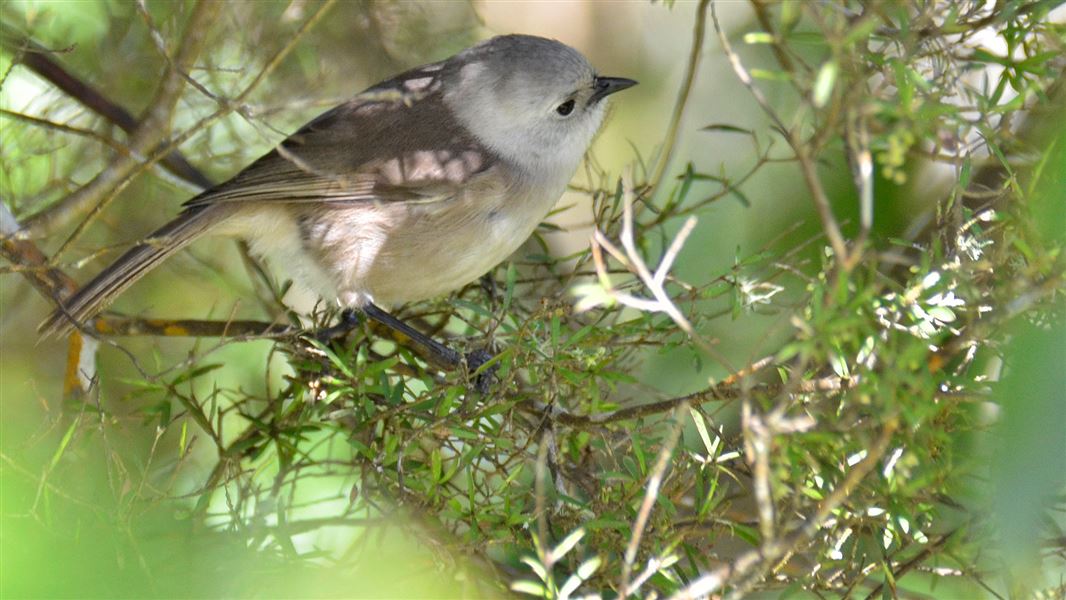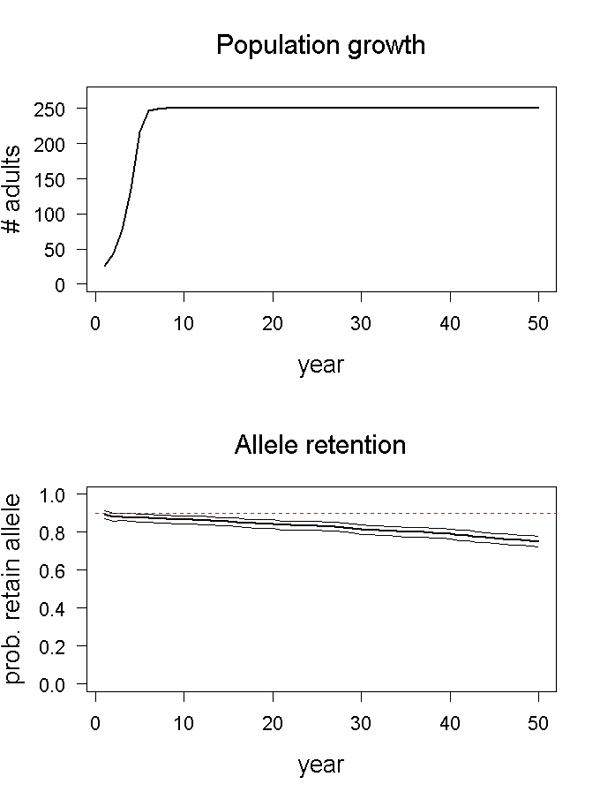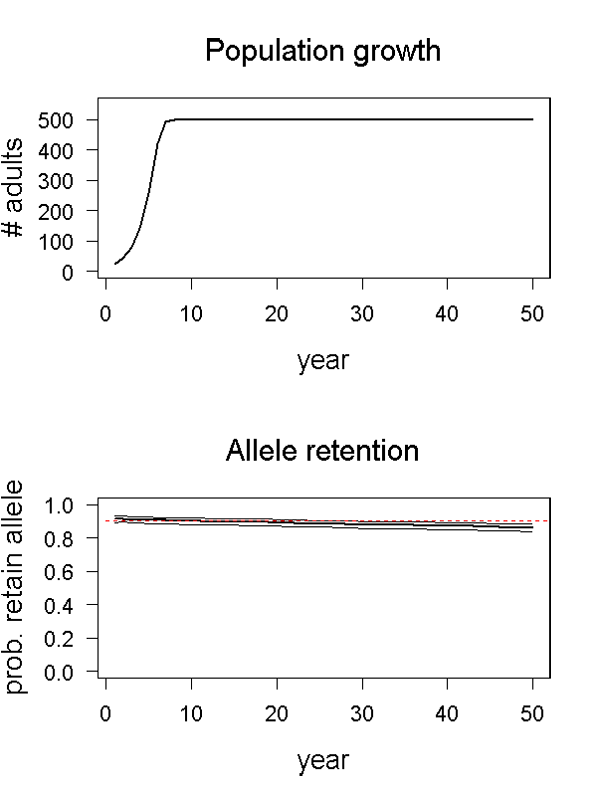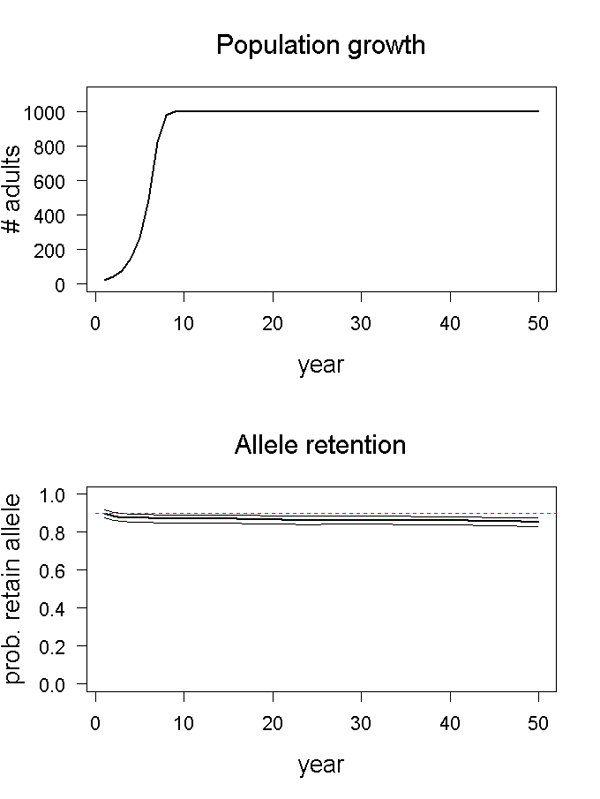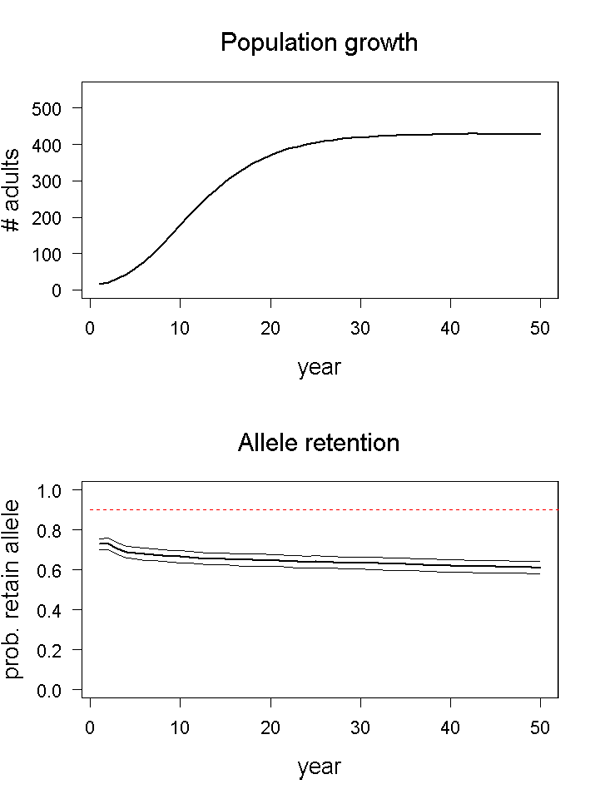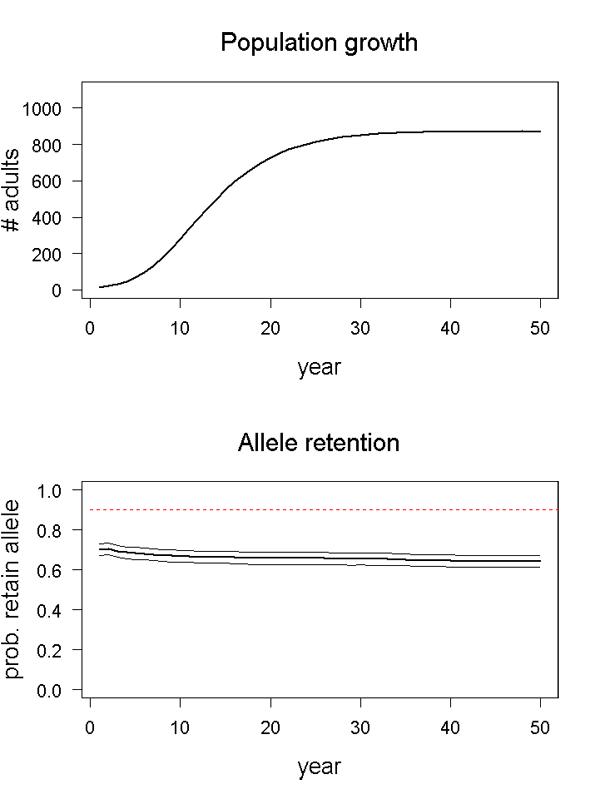First determine your habitat connectivity, habitat size and predator control levels of the translocation site; then view the predicted success of translocations for different scenarios.
Points to note if you are translocating this species
Whiteheads occupy a range of habitats, including coastal forests, inland forests, exotic plantations and scrubby regenerating areas.
Survival and recruitment appear to be high in many translocated populations. However, the data used here were taken from only a few sites making their accuracy uncertain. Monitoring the outcome of your translocation will help to provide more accurate data.
Whiteheads can reach very high densities at some sites, e.g. c. 14 birds/ha on Tiritiri Matangi Island (220 ha).
You can find further information in Best practice techniques for the translocation of whiteheads (popokatea, Mohoua albicilla).
Factors of success for whitehead
Founder number for maximising genetic diversity
≥ 40
Habitat connectivity
Low (isolated)
Dispersal is likely to be low where there is low connectivity. Whiteheads are unlikely to disperse from an island or from mainland sites where there are gaps in suitable habitat of > 250 m. Consequently, translocations to islands and mainland sites with low to medium connectivity have been very successful.
Medium
Some dispersal is likely at sites with medium connectivity, but this is unlikely to affect population establishment and viability. For example, whiteheads have been successfully translocated to Tawharanui Regional Park.
High (adjoining)
The translocation outcome is very uncertain in adjoining habitats. Of two translocations to mainland site with high connectivity, one (Hunua Ranges) has failed while the outcome of the other (Ark in the Park, Waitākere Ranges) remains unclear, despite the translocation of > 600 birds over 11 years.
Habitat size
Small (minimum area)
50 ha – but the site would require very high-quality habitat
Medium
75 ha
High
≥ 100 ha
Minimum predator control
If you are translocating whiteheads, you will need to maintain predators at a low density at the release site at a minimum. However, overall survival and productivity will probably be higher at sites where predators are eradicated or maintained at zero density.
Predators maintained at low density
You must control rats to ≤ 5% during population establishment and throughout the subsequent breeding seasons. Mustelid and possum control is also recommended over the breeding season.
Predators eradicated
This requires the total eradication of all target predators with the exception (in most cases) of mice, or the maintenance of zero density year-round.
Predicted success for scenarios
Whitehead: Scenario 1
Scenario: Low habitat connectivity, small habitat size, predators maintained at low density.
Data source: This projection used productivity and survival data from Zealandia and Te Hauturu-o-Toi / Little Barrier Island, with a reduced juvenile/non-breeder survival at carrying capacity of 0.5.
Conditions: 40 birds were translocated in year one; the carrying capacity of the site was 250 whiteheads; there was no migration.
Outcome: A viable population will likely establish, but some genetic diversity will be lost over ten generations, which could affect the long-term persistence of the population. You could improve this result by choosing a larger site (see Scenarios 2 and 3).
Whitehead: Scenario 2
Scenario: Low habitat connectivity, medium habitat size, predators maintained at low density.
Data source: This projection used productivity and survival data from Zealandia and Te Hauturu-o-Toi / Little Barrier Island, with a reduced juvenile/non-breeder survival at carrying capacity of 0.5.
Conditions: 40 birds were translocated in year one; the carrying capacity of the site was 500 whiteheads; there was no migration.
Outcome: A viable population will likely establish and 80–90% of genetic diversity will be maintained over ten generations.
Whitehead: Scenario 3
Scenario: Low habitat connectivity, large habitat size, predators maintained at low density.
Data source: This projection used productivity and survival data from Zealandia and Te Hauturu-o-Toi / Little Barrier Island, with a reduced juvenile/non-breeder survival at carrying capacity of 0.5.
Conditions: 40 birds were translocated in year one; the carrying capacity of the site was 1000 whiteheads; there was no migration.
Outcome: A viable population will likely establish and 80–90% of genetic diversity will be maintained over ten generations.
Whitehead: Scenario 4
Scenario: High habitat connectivity, medium habitat size, predators maintained at low density.
Data source: No data were available for this scenario so the values were selected by an expert – therefore, there is no certainty in the results. This projection used productivity and survival data from Zealandia and Te Hauturu-o-Toi / Little Barrier Island, with initial survival set at 0.3 and juvenile/non-breeder survival set at 0.5/0.1, respectively, due to the high levels of dispersal into adjoining habitat.
Conditions: 100 birds were translocated in year one; the carrying capacity of the site was 500 whiteheads; there was no migration.
Outcome: There have been no reports of successful whitehead translocations into high-connectivity habitat to date. The translocation into the Hunua Ranges failed and the outcome of the translocation into the Waitākere Ranges (Ark in the Park) is uncertain despite c. 600 birds being translocated over the last 11 years. This lies in stark contrast to the success of single translocations of c. 40 birds to sites with low to medium connectivity. Although it has not been confirmed that connectivity is the primary cause of failure, experts believe that the probability of successful establishment will be even lower than indicated by the graphs below. A viable population may establish but the outcome is very uncertain, and some genetic diversity will be lost initially due to a small founder population and then continue to be lost over the next ten generations, which could affect the long-term persistence of the population. You could improve this result by choosing a low-connectivity site (see Scenario 2).
Whitehead: Scenario 5
Scenario: High habitat connectivity, large habitat size, predators maintained at low density.
Data source: No data were available for this scenario so the values were selected by an expert – therefore, there is no certainty in the results. This projection used productivity and survival data from Zealandia and Te Hauturu-o-Toi / Little Barrier Island with initial survival set at 0.3 and juvenile/non-breeder survival set at 0.5/0.1, respectively, due to dispersal into adjoining habitat.
Conditions: 100 birds were translocated in year one; the carrying capacity of the site was 1000 whiteheads; there was no migration.
Outcome: There have been no reports of successful whitehead translocations into high-connectivity habitat to date. The translocation into the Hunua Ranges failed and the outcome of the translocation into the Waitākere Ranges (Ark in the Park) is uncertain despite c. 600 birds being translocated over the last 11 years. This lies in stark contrast to the success of single translocations of c. 40 birds to sites with low to medium connectivity. Although it has not been confirmed that connectivity is the primary cause of failure, experts believe that the probability of successful establishment will be even lower than indicated by the graphs below. A viable population may establish but the outcome is very uncertain, and some genetic diversity will be lost initially due to a small founder population and then continue to be lost over the next ten generations, which could affect the long-term persistence of the population. You could improve this result by choosing a low-connectivity site (see Scenario 3).
